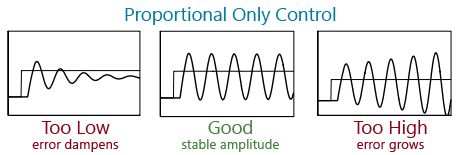Tom De Bie
New member
Hello,
Let me start by introducing myself...
I'm Tom, live in Belgium and found this nice forum after researching "pit controllers"
I'm planning on building a couple of HM myself in the near future. Just waiting on the boards to arrive by slow boat from China... All the electronics are waiting in a box from Mouser...
Now I've read in the Wiki that Ikea probes are not the best probes to be used because they are "wired backwards". This I find strange as inside the probe sits a thermistor and those don't have polarity... So could someone please explain to me why they are wired wrong?
Also found a thread on a Dutch forum about someone who changed the thermistor inside the Ikea probes to a "NTC MF58 4320 B 204 200K ohm ±3% thermistor". These have a high tolerance for temperature and are small enough to fit inside the probe. So I ordered a couple together with a few 2.5mm mono male jack's so I could rewire the entire probe and save a couple of euro's
What are the thoughts about this approach?
I have so many questions, but am reading up on this part of the forum and already found some answers so maybe most of them get answered before my boards arrive. When I start/finish soldering I'm probably gonna need some help, but we'll see that when we get there
Well...ok...Maybe one more... I've read an older post about PID tuning. In Marlin (yes have a 3D printer ) there is an autotune feature for the PID algorithm and I thought why not implement this in HM? Has this got something to do with the Bias that is introduced? Or am I missing something?
) there is an autotune feature for the PID algorithm and I thought why not implement this in HM? Has this got something to do with the Bias that is introduced? Or am I missing something?
Regards,
Tom
Let me start by introducing myself...
I'm Tom, live in Belgium and found this nice forum after researching "pit controllers"
I'm planning on building a couple of HM myself in the near future. Just waiting on the boards to arrive by slow boat from China... All the electronics are waiting in a box from Mouser...
Now I've read in the Wiki that Ikea probes are not the best probes to be used because they are "wired backwards". This I find strange as inside the probe sits a thermistor and those don't have polarity... So could someone please explain to me why they are wired wrong?
Also found a thread on a Dutch forum about someone who changed the thermistor inside the Ikea probes to a "NTC MF58 4320 B 204 200K ohm ±3% thermistor". These have a high tolerance for temperature and are small enough to fit inside the probe. So I ordered a couple together with a few 2.5mm mono male jack's so I could rewire the entire probe and save a couple of euro's
What are the thoughts about this approach?
I have so many questions, but am reading up on this part of the forum and already found some answers so maybe most of them get answered before my boards arrive. When I start/finish soldering I'm probably gonna need some help, but we'll see that when we get there
Well...ok...Maybe one more... I've read an older post about PID tuning. In Marlin (yes have a 3D printer
Regards,
Tom

